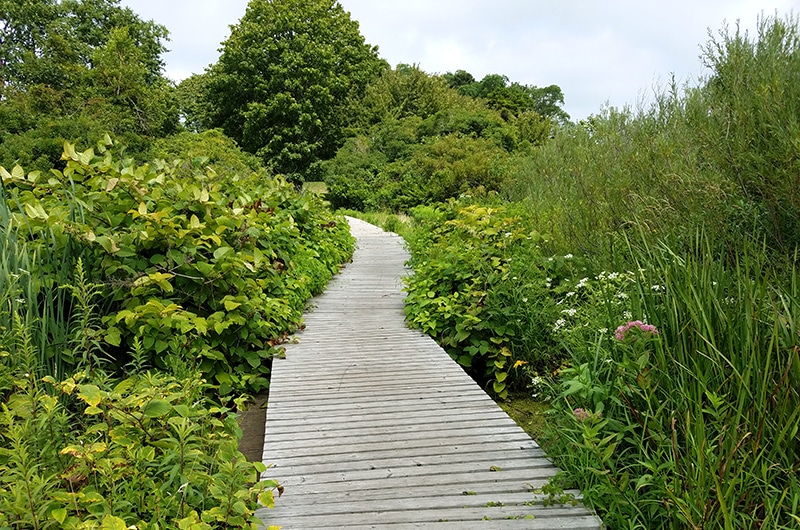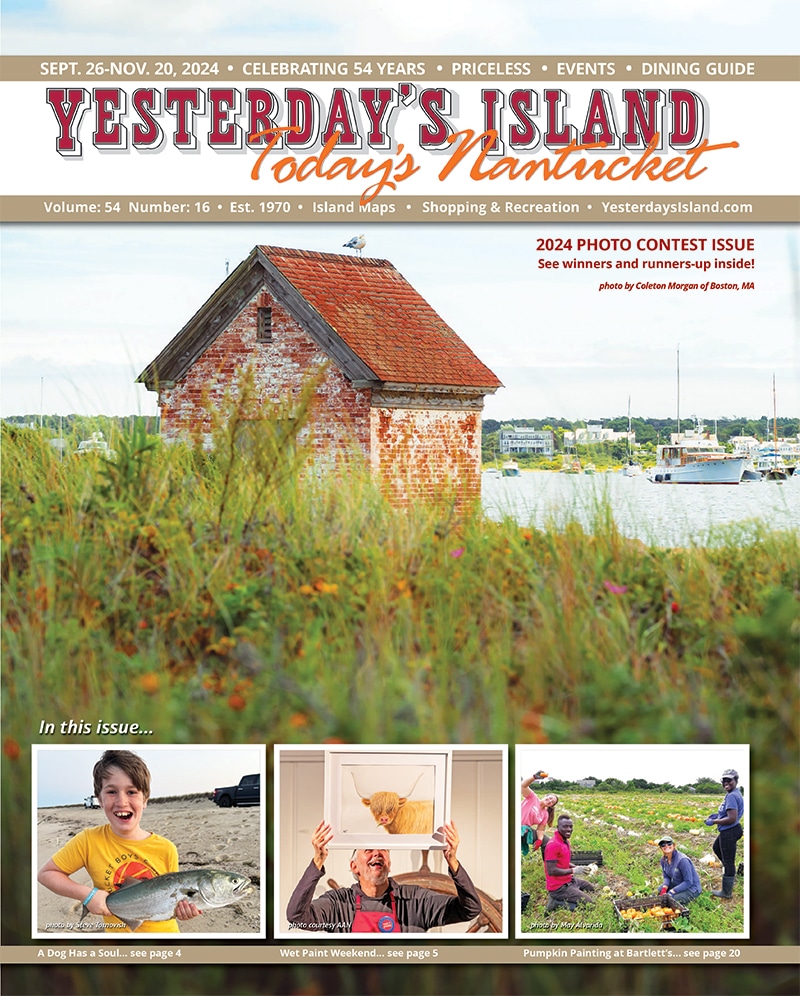by Dr. Sarah Treanor Bois
Director of Research & Education at the Linda Loring Nature Foundation
Nantucket has been a hotspot of global transport since the whaling days of the 18th and 19th centuries. At a time when most people never ventured further than a few miles from their hometown, Nantucketers traveled the world and brought the world back with them. The Nantucket Whaling Museum is full of artifacts from the far reaches of the globe, and our Main Street is lined with cobblestones that may or may not have been ship ballast from afar.
It is no wonder that more than souvenirs and spices were transported back to the island. Plants, animals, and insects have been moved around the globe by humans for centuries. Some were transported intentionally for soil stabilization, medical, and horticultural purposes, but many more were transported by accident. They were hitchhikers in potting soil, clothing, and shipping containers.
With plants in mind, even with all of this moving over hundreds of years, only a few species are able to grow in the new environments they find themselves. Fewer still are able to establish populations and reproduce. It is these hearty individuals that make up our non-native plant community. Of that set, an even smaller number of species are actually able to thrive and spread beyond their initial localized population. With so many natural filters it would seem that there would be very few invasive plants, but it is estimated that around 31% of the New England flora are nonnative, with 10% considered invasive. Both are numbers that continues to grow as globalization becomes the norm.
To be awarded the moniker of “invasive” on Nantucket, the invasive plant species committee (IPSC) follows the Massachusetts Invasive Plant Advisory Group (MIPAG) listing criteria that a plant must follow to cause some kind of harm: be it economic, ecological, or to human health. The IPSC, as well as individual conservation groups, work to manage these species on their properties throughout the island. But with so many invasive species to count, certain properties, habitats, and species are prioritized.
If you see any invasive species on your property, you should properly remove and dispose of the plant. The IPSC has some guidelines on their website nantucketbiodiveristy.org. Reporting plants to IPSC is also helpful for islandwide management efforts.
However, if you would like to see some for a lesson on identification and curiosity, one of the best places on island is at the Lily Pond property owned by The Nantucket Land Bank.
Park in the lot off of North Liberty Street, and from there you can walk down into the field and along the forest edge mix. A great habitat for birds, you may see them flitting in and out of the shrub row. This hedgerow is a treasure trove of invasive plants. Look for leaves, flowers, and fruits of various shapes sizes and colors to differentiate.
Below are some of the most common non-native invasives that can be seen at Lily Pond.

Phragmites (Phragmites australis) is extremely invasive in aquatic systems primarily freshwater ponds and marshes. The tall reeds are detrimental to native plants and wildlife and alter the habitat in which they grow.
Mulitflora rose (Rosa multiflora): Introduced from Japan in 1886 as an ornamental for its perfusion of small white flowers and hardy roots, this plant was promoted as a living fence. Today it is a major invasive species in the New England landscape.
Shrub honeysuckle (Lonicera sp.): Introduced from Japan in the 1860s it was used as an ornamental shrub for its flashy white and fragrant flowers. Birds love the prolific red berries produced throughout late summer, which further spreads the seed.
Porcelain Berry (Ampelopsis glandulosa) is a woody vine which closely resembles our native grape. The fruit, however, are speckled and range in color from dark purple to pink and pale blue. This plant is highly invasive on forest edges and in disturbed habitats.
Oriental Bittersweet (Celastrus orbiculatus) is a woody vine native to Asia. It is well known for its beautiful orange and red fall berries. Bittersweet was first introduced in 1860 for ornamental reasons, and its seeds are spread throughout New England primarily by birds.
English Ivy (Hedera helix): In addition to being invasive, these ivy plants are poisonous so few grazers can eat them. At Lily Pond, English ivy can be seen pulling down trees and smothering other plants.
While this was just a taste of the non-native invasive plants at Lily Pond you can see many others as you walk through this disturbed, wetland habitat.
To learn about the efforts of the IPSC, including educational information, disposal, species alerts, and more visit nantucketbiodiversity.org/ipsc.


